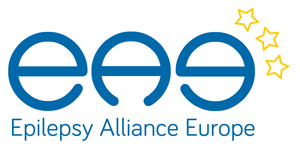What Is An ERN?
Imagine if the best specialists from across Europe were able to combine their efforts and knowledge to tackle complex or rare medical conditions that require highly specialised healthcare and a concentration of knowledge and resources, and to have that service available to all patients, irrespective of where they lived in the European Union. If you can picture that, then you can see the potential of a European Reference Network (ERN).
In Europe, there are approximately 6,000 rare diseases, according to Oprhanet (orpha.net). And, as the ethnic diversity in Europe increases so too will the number of rare diseases.
Of course, providing highly specialized treatment and care for patients with a rare or complex condition can be hugely challenging. This is especially true when the prevalence of such conditions is low, as is the case for rare diseases, including some epilepsies. The problem is caused both to the scarcity of expertise and to the scattering of small patient populations across countries in the European Union (EU), sometimes in isolated locations where expertise does not exist or cannot be accessed.
However, collaboration between EU Member States can help to support the pooling of expertise in order to ensure that this expertise and knowledge is shared between healthcare professionals across national borders. By ensuring that healthcare professionals have the most up to date and expert knowledge available, they will be better informed to take decisions on treatment and care pathways for their patients. An added advantage will be improvements in clinical outcomes and, thereby, the quality of life of people living with a rare disease. ERNs will help to maximise the speed and scale of incorporating innovation in medical science and health technologies.
The e-pilepsy pilot study and the other pilot studies have shown that ERNs do work, are more cost effective, and can be very successful.
E-pilepsy: An ERN Pilot Study
The programme is already underway with pilot programmes that began in 2012. One of these pilot studies is e-pilepsy (http://www.ucl.ac.uk/www.e-pilepsy.eu) with the primary aim of improving the awareness and accessibility of surgery for epilepsy across different countries.
While epilepsy surgery is an established treatment in the management of individuals with drug-resistant focal epilepsy, there is still a lack of awareness of suitable candidates and possible benefits of epilepsy surgery amongst doctors and patients.
e-pilepsy established a consortium of 13 centres as associate partners, with a further 15 collaborating centres driving the project. The primary expected outcome of the project is to increase the number and proportion of European children and adults cured of their refractory epilepsy by improving delivery of optimal epilepsy surgery throughout Europe.
The e-pilepsy pilot study and the other pilot studies have shown that ERNs do work, are more cost effective, and can be very successful. So, there are great hopes for their continued contribution to improved access to treatment and care for people living in Europe with a rare or complex disease.


